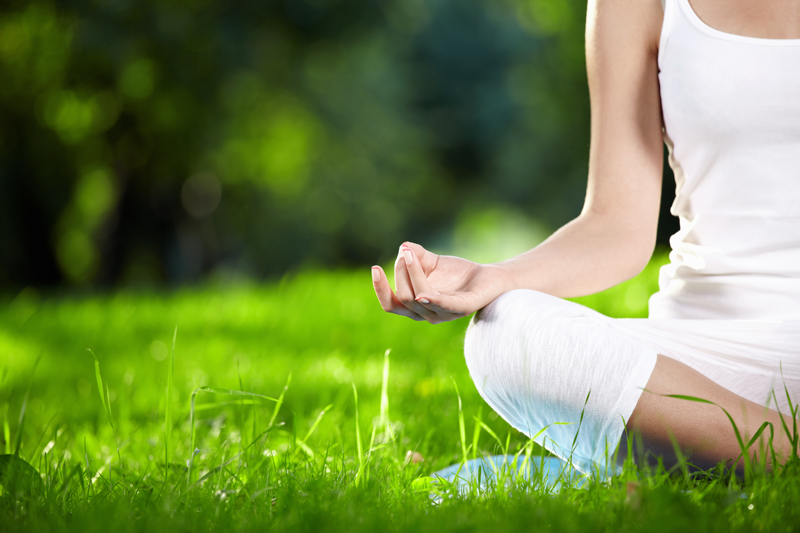There’s more to yoga than tight shorts and yoga jewellery. For many practitioners, yoga is all about learning to get the mind and body working in harmony. Through regular practice, yogis all over the globe find inner peace and stability. With this in mind, eating healthily and mindfully is a huge part of yoga; however, many practitioners don’t even consider it.
Even regular yogis often grab a takeaway, eat quickly on-the-go or munch at their desk whilst sending emails. While they look forward to their practice, they don’t consider what they’re putting into their body before and after each session.
Registered yoga teacher and dietician, Kara Lydon, explains that the best thing about yoga is that it helps us to connect with our bodies. Lydon, who is also the author of Nourish Your Namaste: How Nutrition and Yoga Can Support Digestion, Immunity, Energy and Relaxation, suggests that we should practice listening to the body before and after class to determine when and what to eat. After all, your body holds all of the wisdom to help you eat mindfully, you just need to give yourself time to listen.
To eat more mindfully before and after yoga practice, Lydon and other registered dieticians suggest sticking to certain foods. In this article, we explore exactly what to eat before and after yoga according to top nutrition experts.
What to Eat Before Yoga
Before practising yoga, you want to consume light foods that are easy to digest. Go for healthy snacks that will help you stay loose while you work out. Of course, not everybody will enjoy the same foods and what works for your body is personal and specific. However, the foods below are a great starting point.
1. Simple Carbs
Simple Carbs are one of the best foods to eat before yoga. Go for carbs with small amounts of fat, protein or fibre for energy and staying power. Some of the best pre-yoga snacks are apple or banana with peanut butter or hummus with crackers or carrots.
2. Energising Snacks
Energising snacks are a great choice before a yoga class. This could be anything from fruit or nut butter to toast or even a smoothie, anything that feels energising to you is great.
3. Easy-to-Digest Foods
Before a yoga class, choose foods that are easy to digest and give you balanced energy, such as a combination of protein, wholegrain carbohydrates, and fat for staying power.
4. Eat Two Hours Before You Practice
Whatever you eat, remember to have your full meal no shorter than 2 hours before a yoga class. If you need to eat within two hours of a session, choose a light snack instead.
5. Avoid Fatty, Spicy and Acidic Foods
Before yoga class, avoid fatty, spicy and acidic foods as these can upset your stomach. Also avoid foods that are slow to digest, as they could make you feel uncomfortable while you work out.
6. Give Yourself Time to Digest Before You Practice
As a rule of thumb, give yourself at least one hour to digest after a light snack or at least two hours to digest after a full meal, before heading off to class. Obviously, the exact time it takes to digest food will differ from person to person, so experiment and listen to your body to see what works best for you.
What to Eat After Yoga
At the end of an intense yoga class, you’re likely to feel hungry. However, it’s still important to stick to the right foods. Having a balanced meal or snack with some proteins, carbohydrates, and fats will help you refuel your body and mind. Below, we explore the best foods to eat after yoga.
Fruits
If you’re looking for a light snack, fruit is a great option. It’s packed with simple carbohydrates to refuel your body, as well as water, vitamins and electrolytes to hydrate you. The key ingredient in fruit is the carbohydrates. They will replenish the muscles and maintain an active brain and the health of your nervous system.
Protein
Protein is also important straight after a yoga class. Your muscles are made of protein, so it’s probably no surprise that they need it to refuel and recover. If possible, try to avoid protein shakes or protein bars. The proteins found in these supplements are processed and are often discouraged by nutritionists. They are either full of extra sugar and preservatives or contain more protein than your body needs. Instead, opt for natural sources of protein such as grains, nuts, and pulses. If you’re in a rush, grab a handful of your favourite nuts. If you’ve got more time, eggs are also a great option as they’re packed with protein, vitamins and minerals. Another option is to blend almond milk with cocoa powder, a banana, and a pinch of powdered ginger. If you enjoy protein bars, make your own by mixing dry fruit with nuts.
Natural sources of protein will help the muscles to recover and get stronger. However, try not to go over the top with protein. You only need about 20 grams of protein to keep your muscles happy after an intense yoga class. If you consume more than that, the excess will be stored as fat.
Electrolytes
After an intense workout or hot yoga class, try to replenish your electrolytes. Sports drinks don’t usually have the right number of electrolytes needed after a yoga class and also contain a high level of sugar. Instead of downing a sports drink, go for fruit or water instead. If you’re particularly dehydrated, try a supplement with the correct amount of glucose and electrolytes.
In Summary
So, there you have it – what to eat before and after yoga according to top nutrition experts. To avoid dehydration, pack your yoga bag with a bottle of water and sip on it before and after class. This will help your body to stay in top shape throughout the session.

